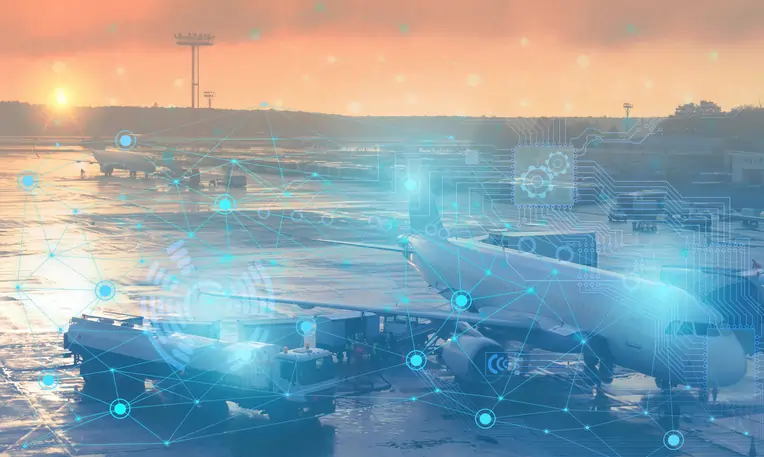
George Richardson, Co-Founder and CEO, AeroCloud
It’s safe to say that every airport has a similar operational goal. To optimise processes to enhance both efficiencies and the customer experience. But until now, many have depended on manual reporting processes such as Microsoft Excel and Word, which has limited the ability of operations teams to make real-time decisions, instead only being able to make retrospective decisions at the end of each week or even month.
But with the AI revolution comes new possibilities, and many airports are thinking about the huge potential AI has to change the way the sector operates. Integrating AI into operations management platforms can open new doors for airports to make predictions that support long-term advancements, react quickly to situations in real time and respond to them more effectively.
So then, let’s explore which applications can have the greatest impact on airport operations and passengers.
AI-powered predictive maintenance
The volume of passengers and airlines that airports need to process each day is an enormous challenge. For evidence, look no further than London’s busiest airport, Heathrow Airport, which processed over 7 million passengers in September 2023 alone. Consistent passenger flow at all times of the day makes it necessary for airports to predict as many arising issues as possible to proactively prevent potential disruptions to passengers. If they don’t, even the smallest disruption to passenger and airline-facing processes can lead to considerable problems for the airport.
This is where AI-powered predictive maintenance is key. It can be implemented throughout the airport. Take this example in a baggage handling system. A faulty conveyor belt or carousel could create hold-ups in receiving luggage, negatively affecting the passenger experience. AI can allow airports to utilise IoT to track performance and spot any arising issues. By streamlining maintenance processes, AI will not only minimise disruption for passengers but also reduce additional expenses for airports.
Flight management systems
Flight management systems are complex, but a crucial component to any airport’s operations. Instrumental in processing aircraft efficiently, this challenge is put into perspective when you consider that airports like PHL Philadelphia had to process over 25,000 total plane movements in August this year. And, that’s before you include external factors beyond the airport’s control like extreme weather conditions and technical faults.
This is why more airports are using AI to improve how they manage inbound and outbound flights by automating processes and gaining greater situational awareness to deal with unforeseen events. They are also moving beyond having to manually manipulate data or update spreadsheets since automated gate management systems use real-time fight data to dynamically plan gate usage accordingly. With better gate management, airports can also maximise their space and their capacity for taking on new airlines.
Biometric passenger verification
Another area where airports are slow to innovate is boarding pass checks at gates, which are often still completed manually and can cause some of the largest delays, and grievances, for passengers. But now, facial biometrics at boarding are using AI to more accurately verify passenger identities, by scanning each passenger’s face and matching it with their passport photo which was scanned previously in security. This reduces the number of times passengers have to show their passport and boarding pass as they pass through the airport.
The potential for efficiency here is huge, as biometric passenger verification could completely remove the need for passengers to show their passports at all. Some of the most innovative airports have started to request passengers register their biometric information before they get to the airport. AI-powered biometrics can then verify passengers at various locations within the airport.
Managing passenger flow
Regardless of whether an airport is busy or not, managing passenger flow efficiently is crucial to ensuring a seamless airport experience. But with many still monitoring security wait times via stopwatches and clipboards, there is significant room for improvement. With AI-powered computer vision, airport leaders are for the first time gaining the ability to understand the passenger journey throughout the airport and identify bottlenecks in real-time, by anonymously tracking passengers from curb to gate.
The learnings that AI provides allow airports to react instantly to arising situations, whether this be opening more check-in desks or more security lanes when queues peak. It also means they can implement long-term solutions, like cleaning particular bathrooms more regularly depending on the number of passengers using them. The result is an enhanced passenger experience and service delivery throughout the whole airport journey – including check-in and security, concessions and up until passengers board their flight – with more efficient resource allocation throughout.
A new era for aviation
AI unlocks pivotal opportunities for airports, revolutionising operations and elevating passenger experiences. Seamlessly integrating AI empowers airports to predict and respond in real time, ensuring unparalleled accuracy and efficiency. So, what are airport leaders really waiting for? It’s time to embrace the future; and harness the power of AI for a new era in aviation excellence.


